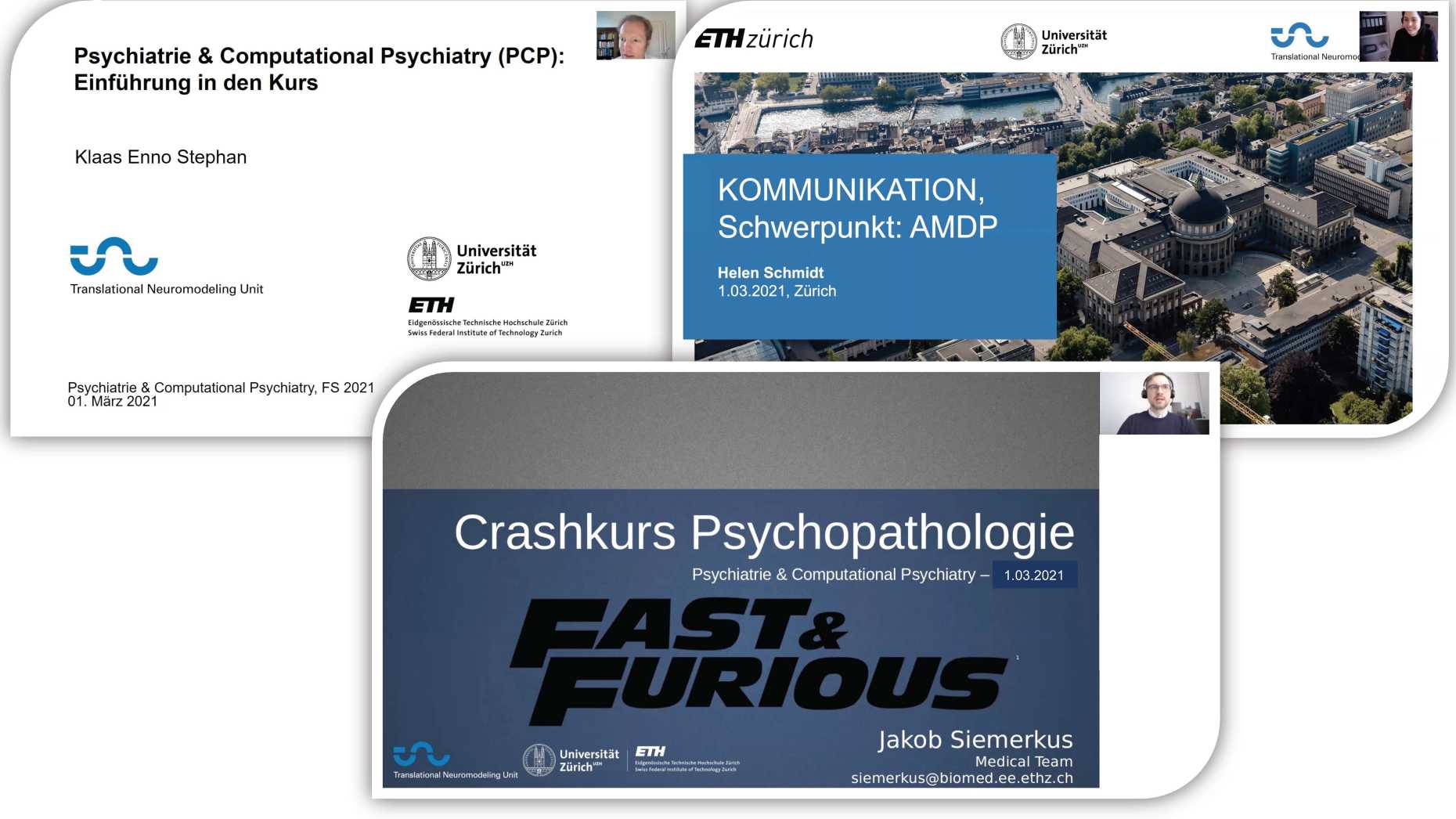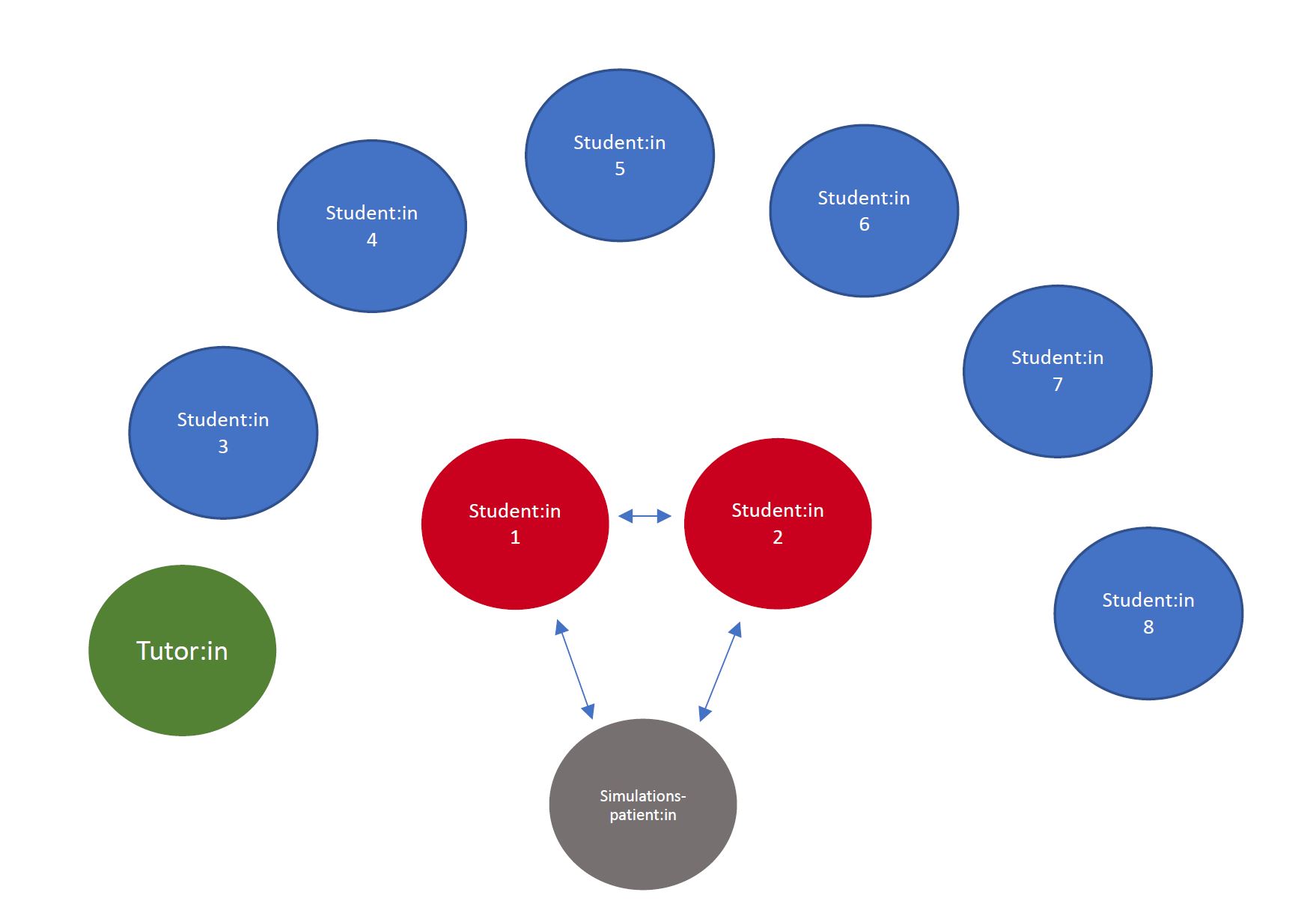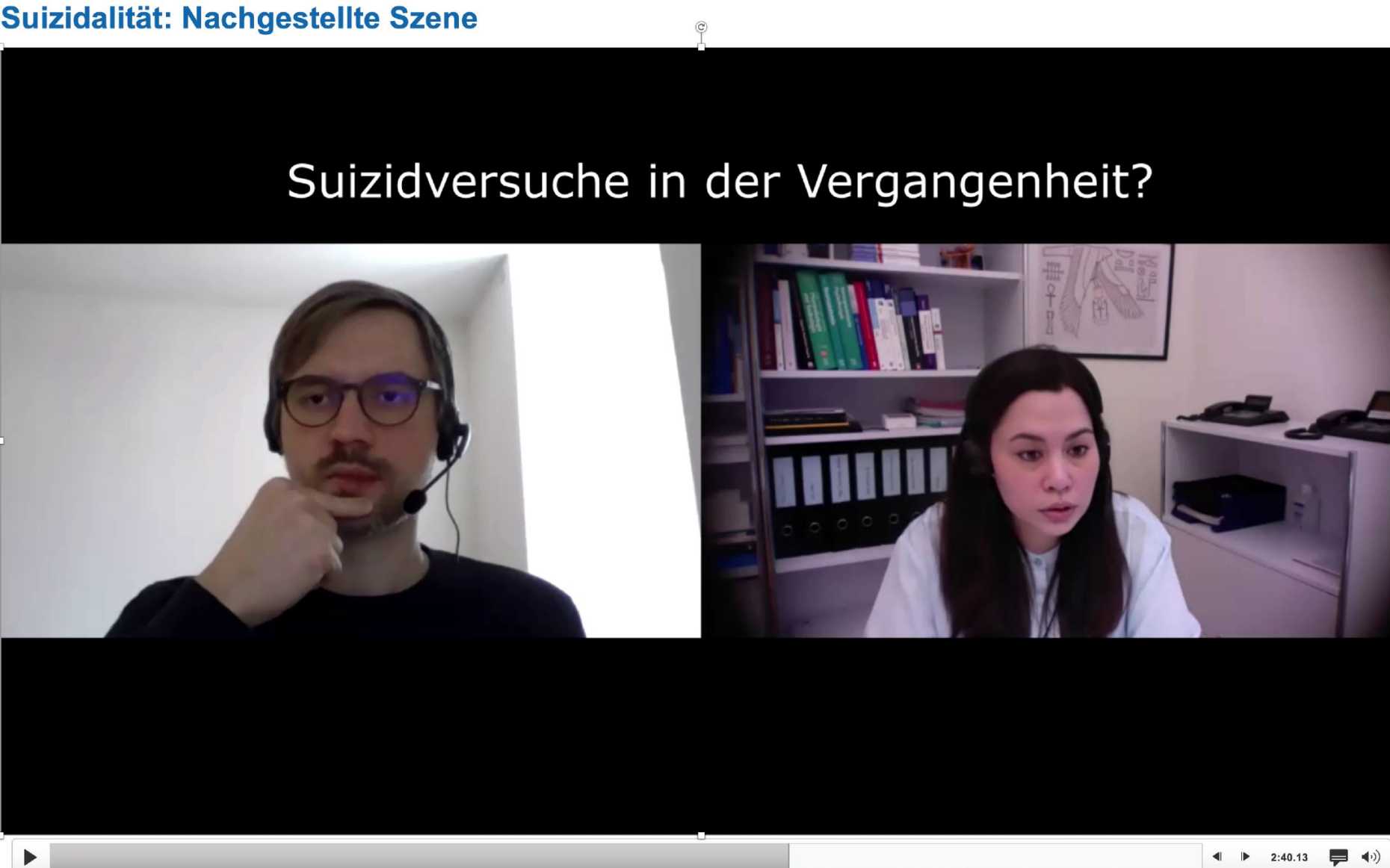Psychiatrie & Computational Psychiatry
Information on teaching mode
The block course “Psychiatry and Computational Psychiatry” in the Bachelor of Medicine (6th semester) is organised by the Translational Neuromodeling Unit (TNU), which belongs jointly to ETH and UZH.
The course is structured as a block course of 5 days. The goal of the course is to introduce students to psychiatry, with a focus on typical psychiatric disorders, and teach them practical diagnostic skills during interviews with simulated patients (actors). Furthermore, they get an overview of the new research field of Computational Psychiatry, which applies computational methods to clinical problems in an interdisciplinary working environment.
The (online) clinical lectures of 50 minutes took place from Monday to Thursday in the morning. In the afternoons, students joined their self-chosen small group with a maximum of 8 students and one clinical tutor twice. In these practical sessions, students were trained how to conduct a psychiatric patient interview in a simulated setting with trained actors.
The last day of the course (Friday) fully focused on Computational Psychiatry and its application to clinical questions.

Implementation of the course during the time of distance learning
Proportions of (active) teaching and (passive) support
The whole week was conceptualized as active teaching. With regard to the preparation of the course, the students received the lecture slides and reading materials in advance on the platform Moodle. Every lecture (a total of 18 hours) was held live and afterwards the recorded lectures were also provided on Moodle. The 10 hours (2x5h) of practical sessions were supported by a clinical tutor.
How do students receive feedback?
During the practical sessions every student received feedback. First of all, each student had to conduct a one-hour interview with a simulated patient, under the supervision of a tutor (an experienced clinician). After each interview, there was a feedback round of 30 minutes involving the simulation person (an actress/actor), the clinical tutor and the other students of the group. These feedback rounds included topics such as communication skills, psychiatric-specific pathological findings, and the student’s self-reflection on their own performance.
Involvement and active participation of students
During the morning lectures students were invited to ask questions in the chat. The lecturer answered all questions directly after the talk; additionally, these discussions were moderated by one of the course organisers. Furthermore, active participation by students was mandatory in the clinical interviews with simulated patients, where each student was required to conduct a one-hour interview under supervision of an experienced clinician.
Communication (channels student-lecturer, student-student, lecturer-lecturer)
Communication was always provided via email or Moodle before, during and after the course.
During the lectures the students were able to get in touch via the chat function in Zoom.
The practical sessions were based on interactive communication by using webcams and microphones. Each group had their consistent breakout session during the week and exchange with the tutor and fellow students was provided in these small groups.
During the interview the tutor was able to support the students by using the chat function.
A separate breakout session room was provided by the course organisers only for clinical tutors.
Which elements of teaching are synchronous and which asynchronous?
All lectures and practical sessions were designed synchronously.
Ways that students receive support
The three course organisers were present during the lectures and held several of the lectures themselves. Therefore, students were always able to approach the course organisers and receive support directly.
During the practical sessions, the students were in close contact with their clinical tutor and the clinical tutor was always in contact with one of the course organisers.
Assessment
The assessment was based on the student's performance during the clinical interviews. After the interview, each student received feedback from the clinical tutor. The clinical tutors reported the results of their assessments to the course organisers.

Innovative elements
Our course featured 2 major innovative elements: the introduction to the field of Computational Psychiatry, and the use of simulation patients (trained actors) for undergraduate medicine students.
First, our course offers a direct connection between clinical and scientific concepts. To our knowledge, it is the first psychiatry course worldwide that covers Computational Psychiatry in a medical curriculum. This allows students to learn about the latest scientific developments in psychiatry at an early stage during their studies and make connections to engineering/mathematical topics that feature in the ETH curriculum for medicine.
Second, using simulation patients served to introduce students to the clinical aspects of psychiatry at an early stage during their studies. The use of simulation patients is particular suitable for less experienced students since they enable a safe learning environment where mistakes do not have any consequences for patients but instead allow the group to reflect on pitfalls and improvements.
Clinical interviews with a focus on psychiatric problems are fundamentally important because, regardless of their later specialisation, doctors will frequently be involved in difficult conversations about mental health issues during their clinical careers. Usually, in classical medicine curricula, simulation patients are only used during exams to assess practical (manual) skills. By contrast, our course offered ETH students the opportunity to learn interviewing skills that are of importance for difficult conversations, providing enough time for reflection and encouraging the students to discuss their uncertainties with experienced clinicians.
From the teacher’s perspective, the use of simulation patients simplifies the planning and at the same time allows the presentation of multiple disorders within a limited timeframe. It also allows for the inclusion of examples showing acute psychiatric problems, something that is nearly impossible to achieve – for ethical and organisational reasons – in a classical setting with real patients. The limited time resources can be used effectively, as there are no delays or cancellations of patients.
Student feedback
We conducted a survey study before and after the course. Altogether, 57 students participated in this study.
In summary, the practical sessions were rated as the best part of the entire course. In particular, the students welcomed the concept of a simulated patient interview, in a way to address critical psychiatric issues within a “safe” environment without being afraid of harming someone due to mistakes.
The students also enjoyed the debriefing part with a focus on self-reflection, communication skills and the in-depth discussion of psychopathological findings.
Furthermore, they benefitted greatly from the preparation process with the clinical tutor before each interview. All participating parties – the actresses, clinical tutors and the other students in their role as observers – were actively involved in the feedback round. The students reported that they benefitted considerably from these different perspectives.
Overall, they reported having gained new knowledge in Psychiatry and Computational Psychiatry, but also their attitudes towards psychiatry changed in a positive way. In brief, they enjoyed the course greatly.
Course description
Overall concept of the course before the pandemic - during - after
The course “Psychiatry and Computational Psychiatry” at ETH took place for the first time in 2020 as part of the curriculum in medicine. The students are in their last year of the Bachelor before continuing the Master’s programme at another Swiss University. At that point in time, they have had no contact with psychiatric patients. The learning objective included conducting a patient interview with a focus on psychopathological findings.
In the morning sessions, students had lectures about communication, psychopathology and different psychiatric disorders. In the afternoon sessions, students conducted clinical interviews with simulated patients (actors) under the guidance of an experienced clinician. The patient was simulated by a professional actor who had been trained, on the basis of a carefully crafted script and instructions by the course organisers, to display a particular psychiatric disorder. Pairs of two students conducted a one-hour interview each.
Afterwards, they received feedback from the other students, the actor and the clinical tutor. In the feedback round, the students were encouraged to reflect on their own communication skills and the emotional experience during the interviews. These skills are important for their future role as a medical doctor, regardless of their specialization, and are thus fostered at an early stage.
On the last day of the course, the students were introduced to Computational Psychiatry which applies computational methods to clinical problems.
The main concept of this course could also be implemented during the pandemic, except for the fact that all lectures and the practical sessions were organized in Zoom.
We plan to continue the main concept in the future (on-site) but supplementing it with additional video material on Moodle that would support additional preparation for the clinical interview training.
